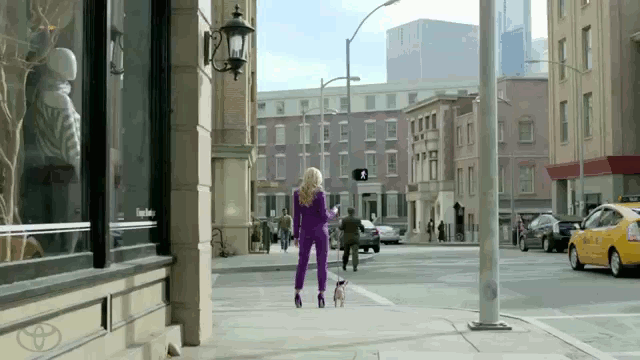
Anime is cinematically shot as if by camera, including panning, zooming, distance and angle shots to more complex dynamic shots that would be difficult to produce in reality. In anime, the animation is produced before the voice acting, contrary to American animation which does the voice acting first.
What is the process of making an anime?
PRE-PRODUCTION
- Story. This is the essence of the piece you are going to create. ...
- Storyboarding. This is where the script is broken down into scenes and drawn into panels much like a graphic novel.
- Editorial = Phase 1. ...
- Visual Development / Look Development. ...
- Pre-Visualization. ...
What is the worst anime to be made?
- It looks stunning
- Design quality is out of this world
- The detail is unreal
When and how did anime become popular in America?
The 1980s would become the golden age of anime as clear fandoms for the art form began to arise. In Japan, the otaku subculture started to grow. Meanwhile, American audiences were being exposed to even more elaborate and higher quality adaptations of anime thanks to improved home video technology.
How to make your own anime?
Part 4 Part 4 of 4: Improving Your Skills
- Study human anatomy. Making characters that look good starts with a basic knowledge of human anatomy.
- Draw from life. Drawing a manga character requires a basic knowledge of the human body. ...
- Practice different, dynamic poses. ...
- Keep practicing! ...
See more

What are the companies involved in anime production?
This is the planning and financing stage. The anime production company (e.g. Aniplex, Bandai Visual, Kadokawa Shoten, Pony Canyon, Sony, Toho, Viz Media) is in charge of fronting costs for staffing, broadcasting, and distribution. In essence, they pay studios to make it, television stations to air it, and the licensor to distribute it domestically and internationally. Most of all, they collect the profits from the sales. Sometimes, multiple production companies are involved in a single anime. Studios (e.g. A-1 Pictures, Bones, J.C. Staff, Kyoto Animation, Madhouse, Production I.G, Studio Ghibli, Trigger) are the ones who staff, pay, and create the actual anime. If the anime is an original idea, the studio will sometimes help front the costs.
How long is an anime season?
For most of us, anime production is all smoke and mirrors. The distance between the concept art and the finished masterpiece is the length of a typical 12-week season. Truth be told, unless you’re fluent in Japanese, the production process governing Japanese animation is shrouded in mystery. Trying to learn more will lead you down a rabbit hole ...
Who is responsible for the storyboards?
Storyboards. The director is usually responsible for the storyboards, as well. In long-running TV-anime, as opposed to seasonal anime, storyboards usually fall to different storyboarders. In an ideal world, the storyboards would be entirely finished before an episode goes into production.
Is anime a labor of love?
Anime is also a labor of love and one that requires the talents of many people, as well as the patience of a select few. After all, it is one that requires many, many steps. The success of even one episode is no small feat, and one misstep can have dire consequences for the entire production.
How to make a story about a character?
Once you have characters and a world, you can start turning the characters interacting with the world into a story. This involves creating dialogue. Use dialogue that matches the situation and the character. Try to make the dialogue as realistic as possible. Think about the way you talk and create conversations like that. Conversations are rarely 100 % directed. They sway and change the subject constantly. Figure out a way to add authenticity, and humor to your dialogue.
What is a wikihow article?
Download Article. X. wikiHow is a “wiki,” similar to Wikipedia, which means that many of our articles are co-written by multiple authors. To create this article, 39 people, some anonymous, worked to edit and improve it over time. wikiHow marks an article as reader-approved once it receives enough positive feedback.
How to draw a character?
1. Decide on what they look like and their personalities. You should try to decide what they look like at the same time that you decide on their personalities. Try drawing the characters and then jotting down beside them what their personality traits would be.
Can you send an anime to a competition?
Send out your anime to competitions. If you don’t want to send the whole story you can just send out chapter s of your anime to shorter competitions. There are plenty of film and writing-related competitions that accept anime, as well as anime specific competitions that you can find online.
Is it easy to make an anime?
Learn more... Making an anime is no simple task. It’s an entire process of building and illustrating a world, finding motivations, weaving stories – this is a major undertaking! However, it’s also a great exercise in creativity. If you’re passionate about anime, you’ll probably really enjoy making your own.
Is RWBY an American anime?
No - take RWBY as an example. It's considered an American anime, and has actually been translated to Japanese! It's just that anime typically is made in Japan, and that's what you see most of the time.
How does anime differ from other forms of animation?
Anime artists employ many distinct visual styles. Anime differs greatly from other forms of animation by its diverse art styles, methods of animation, its production, and its process. Visually, anime works exhibit a wide variety of art styles, differing between creators, artists, and studios.
Where does the word "anime" come from?
Some sources claim that the term is derived from the French term for animation dessin animé ("cartoon", literally 'animated design'), ...
What is anime in the US?
English-language dictionaries typically define anime ( US: / ˈænəmeɪ /, UK: / ˈænɪmeɪ /) as "a style of Japanese animation" or as "a style of animation originating in Japan". Other definitions are based on origin, making production in Japan a requisite for a work to be considered "anime".
How much does an anime episode cost?
An anime episode can cost between US$100,000 and US$300,000 to produce. In 2001, animation accounted for 7% of the Japanese film market, above the 4.6% market share for live-action works. The popularity and success of anime is seen through the profitability of the DVD market, contributing nearly 70% of total sales.
What is anime in English?
However, outside of Japan and in English, anime is colloquial for Japanese animation and refers specifically to animation produced in Japan. Animation produced outside of Japan with similar style to Japanese animation is referred to as anime-influenced animation . The earliest commercial Japanese animations date to 1917.
What is anime in Japanese?
Anime. Not to be confused with Amine. Anime ( Japanese: アニメ, IPA: [aɲime] ( listen)) is hand-drawn and computer animation originating from Japan. In Japan and in Japanese, anime (a term derived from the English word animation) describes all animated works, regardless of style or origin.
What was the first anime?
Three Tales (1960) was the first anime film broadcast on television; the first anime television series was Instant History (1961–64). An early and influential success was Astro Boy (1963–66), a television series directed by Tezuka based on his manga of the same name. Many animators at Tezuka's Mushi Production later established major anime studios (including Madhouse, Sunrise, and Pierrot ).

Overview
Anime is hand-drawn and computer-generated animation originating from Japan. Outside of Japan and in English, anime refers to Japanese animation, and refers specifically to animation produced in Japan. However, in Japan and in Japanese, anime (a term derived from a shortening of the English word animation) describes all animated works, regardless of style or origin. Animation produced outside of Japan with similar style to Japanese animation is commonly referred to as anime-influenced animation.
Etymology
History
Attributes
Industry
Globalization and cultural impact
Anime has become commercially profitable in Western countries, as demonstrated by early commercially successful Western adaptations of anime, such as Astro Boy and Speed Racer. Early American adaptions in the 1960s made Japan expand into the continental European market, first with productions aimed at European and Japanese children, such as Heidi, Vicky the Viking and Barbapapa, which aired in various countries. Italy, Spain, and France grew a particular …
See also
• Animation director
• Chinese animation
• Cinema of Japan
• Cool Japan
• Culture of Japan
External links
• Anime at Curlie
• Anime and manga in Japan travel guide from Wikivoyage
Popular Posts:
- 1. how to level up fast in anime fighting simulator
- 2. what to wear to anime expo
- 3. which anime girl am i quiz
- 4. how to draw basic anime girl
- 5. can pokemon cards be appraised at one stop anime
- 6. what anime character you look like filter
- 7. where to watch yes no maybe anime
- 8. how to draw angry anime face
- 9. how to draw abs anime easy
- 10. do xerneas and yveltal appear in the anime